Largest step forward in Monitor conservation since 2002
The Mariners’ Museum and Park, NOAA’s Monitor National Marine Sanctuary, and Huntington Ingalls Industries’ Newport News Shipbuilding division are gearing up to embark on a significant milestone in the conservation of the USS Monitor’s turret. The project began Thursday, April 4, and will be a major step forward in making the public display of the turret a reality.
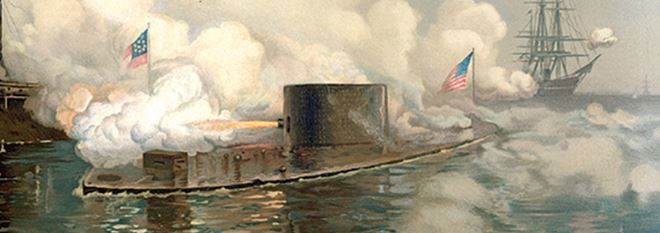
This sizeable project to re-support the turret has been a huge undertaking by The Mariners’ Museum conservation staff, requiring meticulous planning and key collaboration with NOAA’s Monitor National Marine Sanctuary, Newport News Shipbuilding, apprentices at Colonna’s Shipbuilding in Norfolk, Fairlead Boatworks, and Hampton Rubber company.
“Some people call the USS Monitor ‘the little ship that saved the Nation’ during the Civil War,” president and CEO Howard Hoege said. “A crew that included seven African Americans, immigrants, and people from all walks served together on USS Monitor, united by the common purpose of ensuring the survival of the United States of America. The fact that so many in our community—workers from Colonna’s, Fairlead, Hampton Rubber, and Newport News Shipbuilding—are rallying to save the history that the iconic turret represents is fitting, symbolic, and powerful in these times. We could not be more grateful.”
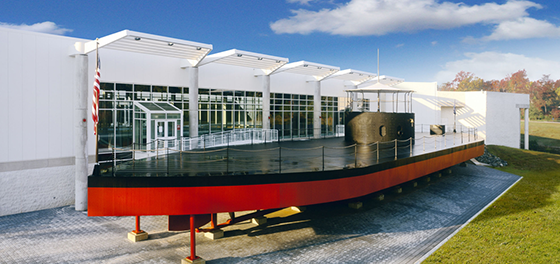
To date, conservators within The Mariners’ Museum’s Batten Conservation Complex have removed almost all marine growth and heavy corrosion from the artifact with the next major treatment phase being the removal of the roof components. Ultimately, the re-support of the turret will shorten the treatment time for the artifact and eventually allow The Mariners’ Museum to display the massive engineering marvel, providing the public a pathway to connect to the brave men who fought within in it on March 9, 1862.
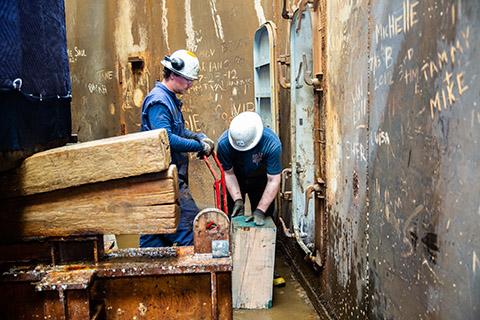
The turret of the USS Monitor remains as powerful a symbol today of the cost of freedom as it did in 1862,” NOAA Sanctuary Superintendent David Alberg said. “NOAA is committed to assuring this symbol, and the remains of the Monitor still on the seabed are preserved for future generations of Americans to teach, remind and preserve our national story. But none of that could be accomplished without our partners at The Mariners’ Museum and through the generous support of Newport News Shipbuilding.”
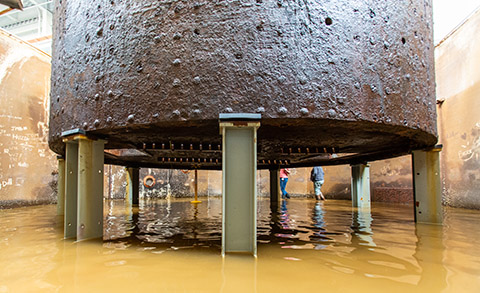
“Since The Mariners’ Museum was founded through the work of Newport News Shipbuilding leaders in 1930, the shipyard and the Museum have shared a unique bond,” said Tom Cosgrove, Newport News’ manager of corporate citizenship and government relations. “In recent years, shipbuilders have built a full-scale replica of the USS Monitor outside the Museum and the shipyard has helped open the Museum to the entire community by underwriting $1 admissions. We are proud to continue that tradition of support by using our expertise to ensure further conservation of this important piece of naval history with the goal of one day making it accessible and connecting people more completely to our history.”
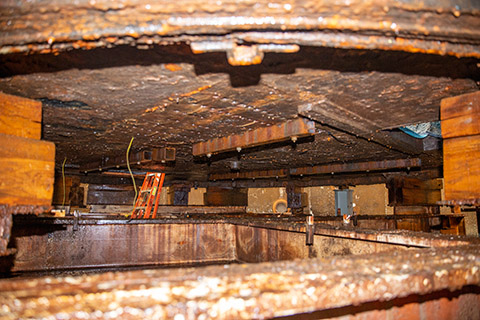
USS Monitor’s Discovery and Conservation Timeline:
1862 – USS Monitor sinks in a storm off the coast of Cape Hatteras, N.C. - her final resting place remaining a mystery for more than a century.
1973 – A team of scientists led by Dr. John G. Newton of the Duke University Marine Laboratory discovered the Monitor while testing geological survey equipment.
1974 – A second visit to the site positively identified the Monitor, lying in approximately 230 feet of water about 16 miles south-southeast of Cape Hatteras.
1975 – USS Monitor is designated the nation’s first national marine sanctuary under the management of the National Oceanic and Atmospheric Administration (NOAA).
1977 – The Monitor’s red signal lantern was recovered. The red signal lantern was the last thing seen during the Monitor’s sinking and the first object recovered from the ship’s final resting place. The lantern is currently on display with other Monitor artifacts at The Mariners’ Museum and Park.
1987 – The Mariners’ Museum is designated the principal museum for the Monitor’s collection of artifacts and historical and scientific data.
2002 – Excavation of the turret uncovered both 8-ton Dahlgren guns and their carriages intact within the 120-ton artifact, which was upside down when the ironclad sank and flipped over. Human remains were also discovered buried inside the turret. In August of 2002, USS Monitor’s turret was placed onto a substantial support pad constructed of I-beams and steel plate at the seafloor prior to being raised to the surface. The turret was then transferred to The Mariners’ Museum, the temporary support pad became permanent and, 17 years later, is still being used to hold up the artifact within its treatment solution tank at the Batten Conservation Complex.
2011 – The Mariners’ Museum worked with Newport News Shipbuilding to design the re-support stands.
2017 – Re-support stands designed by Newport News Shipbuilding were fabricated by apprentices at Colonna’s Shipbuilding in Norfolk. Fairlead Boatworks applied epoxy-coated the stands and Hampton Rubber company provided rubber padding for the turret to rest on top of the new stands.
2019 – After 17 years in conservation, new re-support stands for the turret will be installed by Newport News Shipbuilding. After the re-support project is completed, The Mariners’ Museum conservation staff will be able to remove the roof of the turret and will shorten the treatment time for the artifact. It is estimated that the conservation process could be completed in less than 10 years, and with an optimistic projection to make the entire turret available for public display by 2035.
Learn more at the Mariners’ Museum website.




